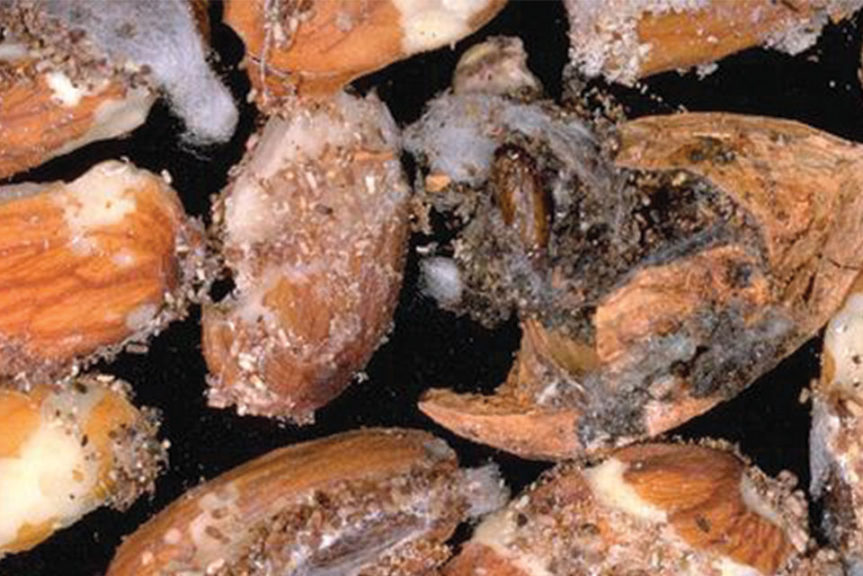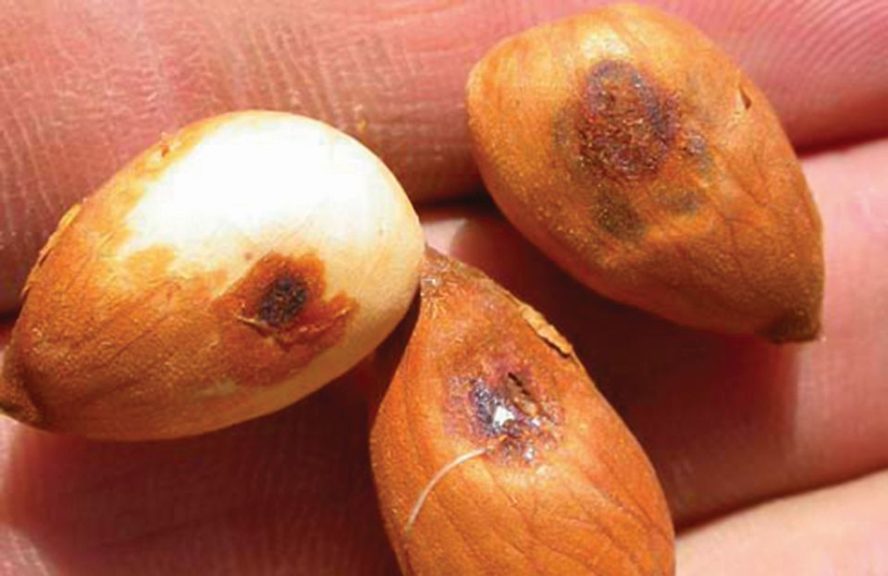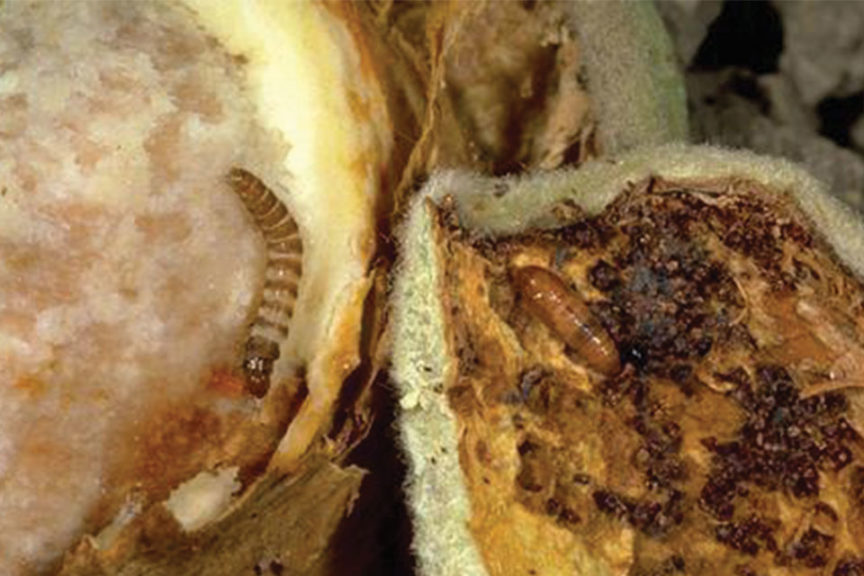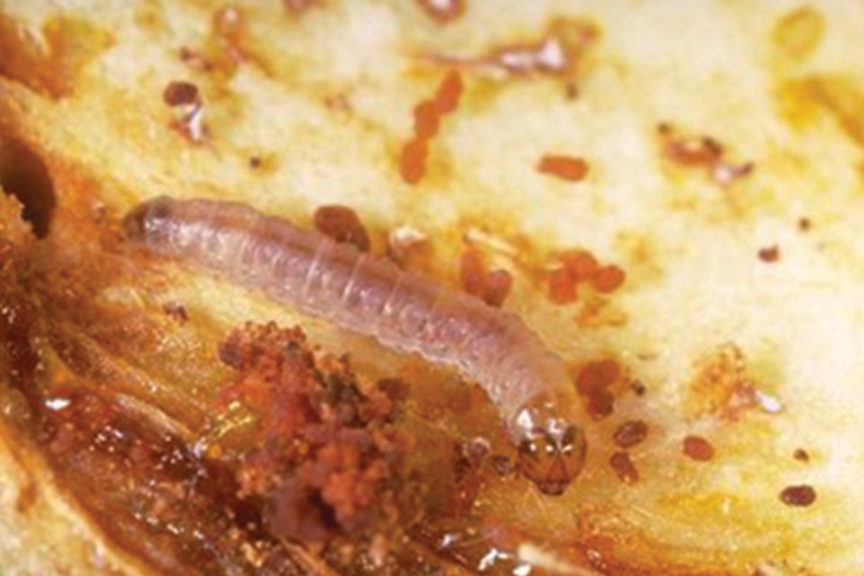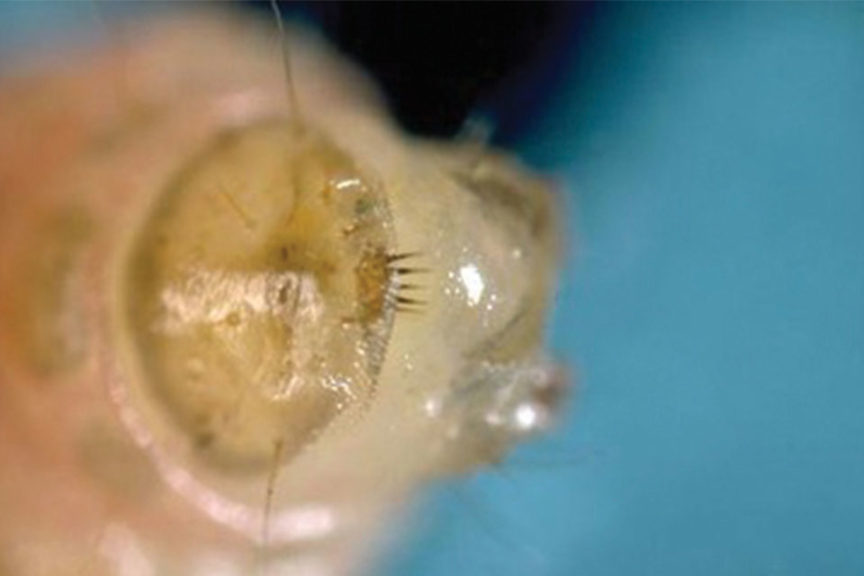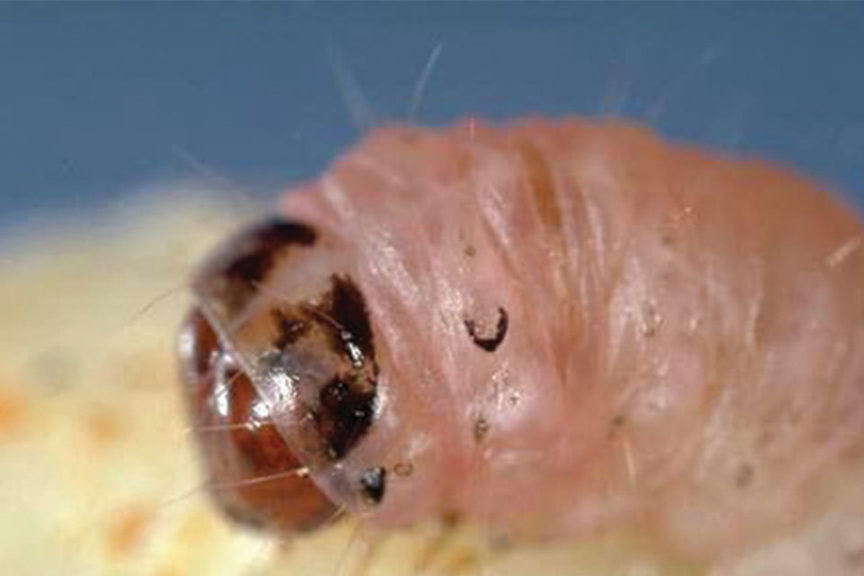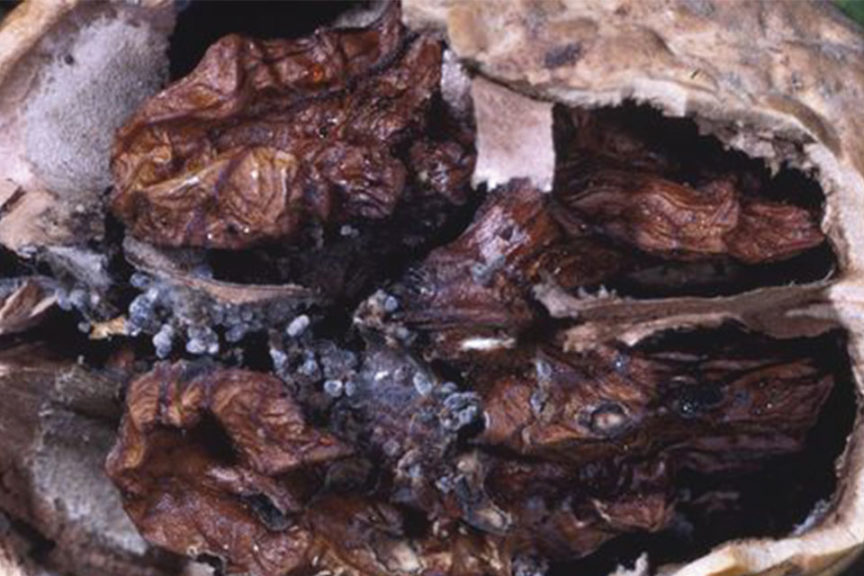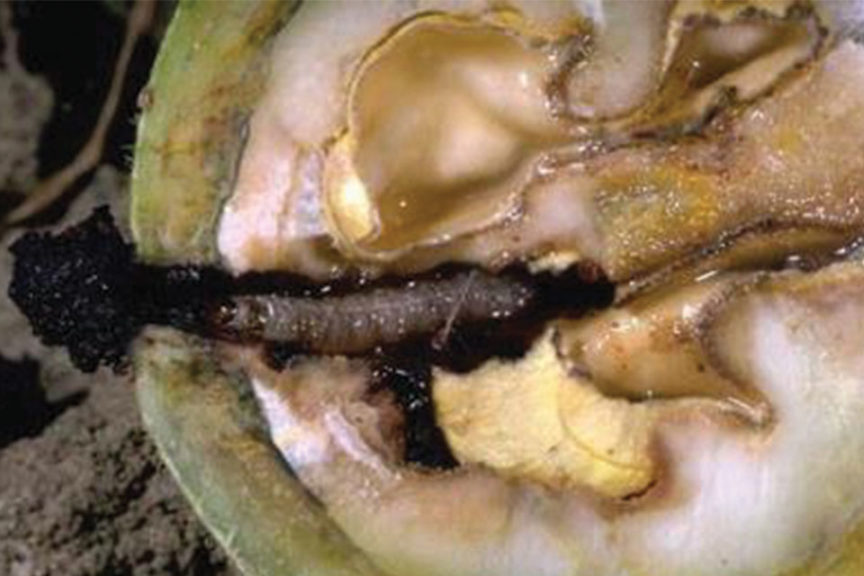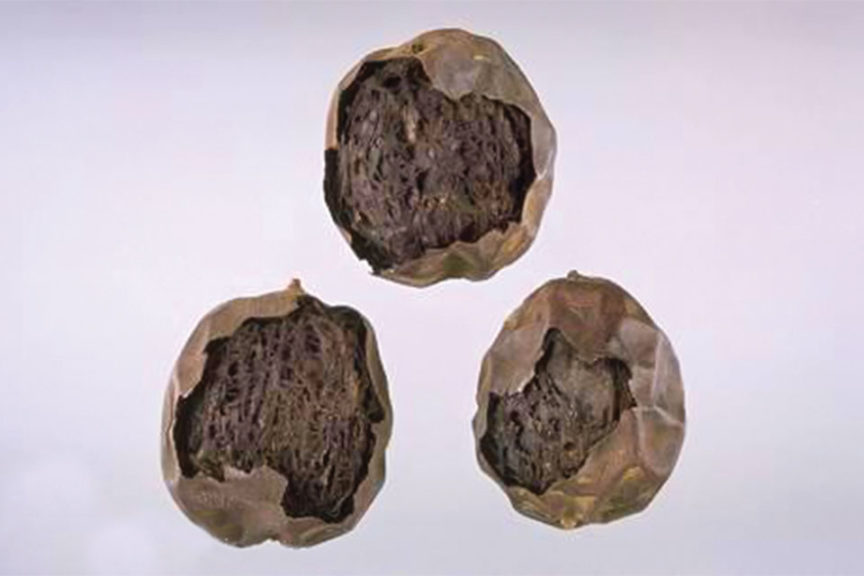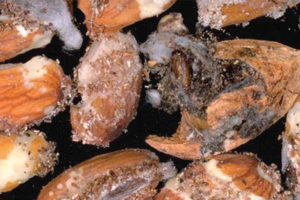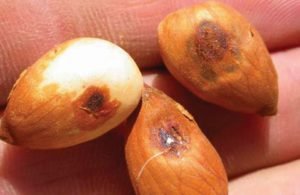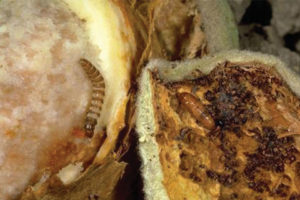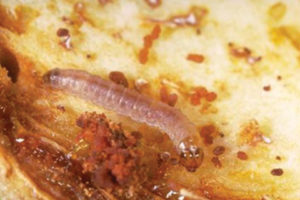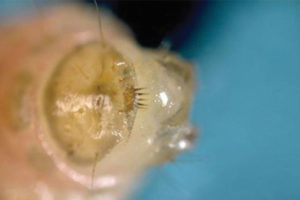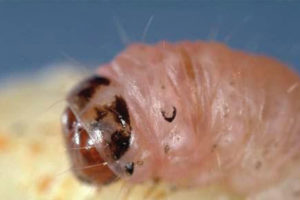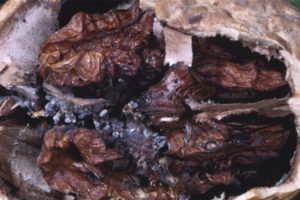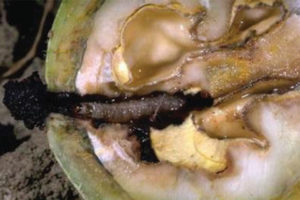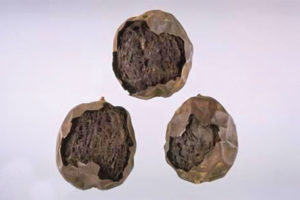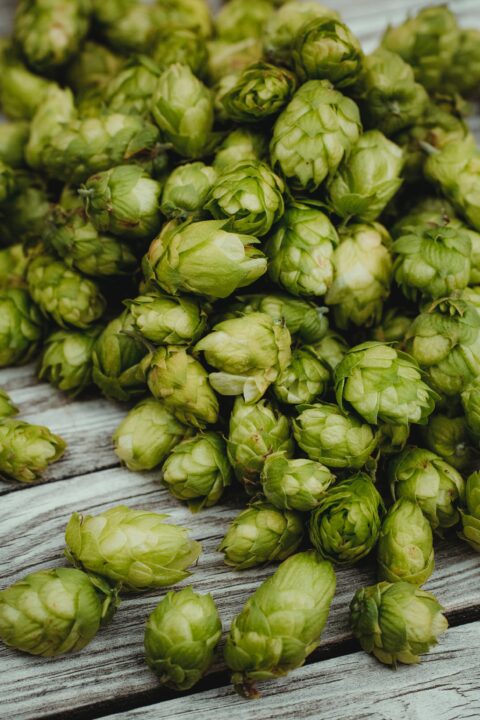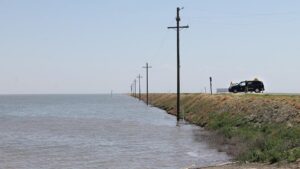Best Practices for Almond and Walnut Harvest Sample Evaluations
The 2017 almond and walnut harvest is finally complete. While in-season pest management decisions are behind us, now is the time for a key activity in your year-round integrated pest management (IPM) program – harvest sample evaluation.
Obtaining harvest samples and taking the time to crack out and identify the sources of damage is well worth the investment. Grade sheets alone will not distinguish among the various types of damage. Knowing the culprit provides valuable information, such as: How successful was my pest management program this season? How effective were my treatment decisions, timings, materials, and applications? What might I need to do differently next year?
Information from annual harvest samples should be kept to establish block-specific historical records, which help focus pest management activities in subsequent years. With worm damage, noting the size and stage of development (larvae, pupae, and emerged pupae) indicates when the initial infestation occurred and can be compared with monitoring and treatment records to improve future pest management decisions.
Large Samples Preferred
Ideally, University of California IPM guidelines recommend collecting a sample of 500 nuts per block at almond harvest and 1,000 nuts per block in walnuts. However, you know your orchards best. Obtain a representative sample of nuts from each block at harvest. In walnut orchards with two shakes, obtain a proportional sample at each shake. Collect nuts from multiple areas of the block. If you are collecting after nuts have been blown into rows, make sure to collect a stratified sample from the pile (not just nuts sitting on the top layer – infested nuts may weigh less and be a larger proportion of those on the top layer).
Larger blocks may require more samples to provide an accurate estimate of damage identification. However, smaller blocks with a great deal of variation in pest pressure may require more samples than larger, more uniform blocks. Multiple years of sampling and site-specific historical records can help guide your harvest sampling process.
In a perfect world, samples should be processed soon after collecting. However, storing harvest samples and cracking out once things slow down is often necessary. At a minimum prior to storing for any length of time, refrigerate the samples, remove hulls within a few days of collection, and record any hull infestation or damage. This will limit rotting and movement of pests between nuts. Once hulls are off, relatively dry nuts will hold for a period of time in cold storage (refrigerator temperatures); however, freezer temperatures are best for longer-term storage or when seeking to identify pest developmental stages.
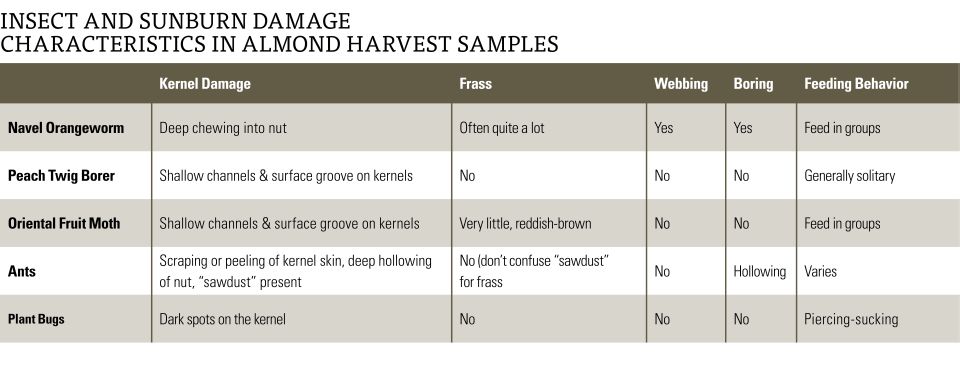 Almonds
Almonds
The main insect pests responsible for much of the damage observed at harvest in almonds include navel orangeworm (NOW), peach twig borer (PTB), oriental fruit moth (OFM), ants, and plant bugs (leaffooted bug and stink bugs). If worms are present in your samples, they can be visually distinguished by the following key characteristics:
NOW: Larvae milky white to pinkish with a brown head capsule. Look for the dark crescent shapes on the second segment behind the head capsule on either side.
PTB: Larvae brown and white striped with dark head capsule.
OFM: Larger larvae pinkish with brown head capsule (newly hatched larvae are whitish with black head capsule). Somewhat similar in appearance to NOW but without crescent-shaped markings. A hand lens can be used to detect the presence of an anal comb on the last abdominal segment.
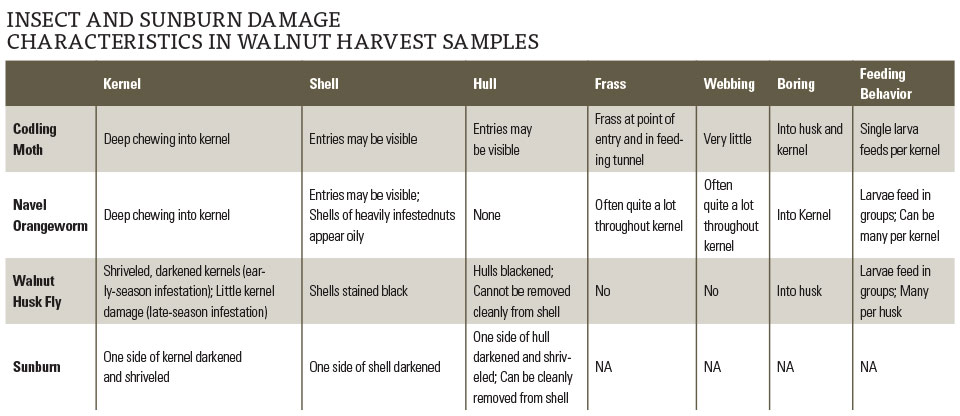 Walnuts
Walnuts
Insect damage typically encountered in walnut harvest samples include codling moth (CM), walnut husk fly (WHF), and NOW. In addition, damage caused by environmental and physiological problems, e.g., sunburn, oilless nuts, water or nutrient stresses, and disease, e.g., blighted nuts caused by bacterial blight or the Botryosphaeria/Phomopsis fungal complex, may be evident in harvest samples.
CM: Similar in appearance to NOW, but lacking crescent-shaped markings.
NOW: described above.
WHF: Small, legless maggots. Early instars are whitish; older instars yellow. Other maggots you may encounter in the hulls of already damaged/dropped/blackened nuts belong to a different group of flies – vinegar flies. These are secondary invaders of nuts already damaged by other causes and do not require in-season treatment. Try to distinguish vinegar fly infestation from WHF damage at harvest. Vinegar flies are narrower in shape and remain white throughout development.
For more information, visit the UC IPM Pest Management Guidelines for Almond and Walnut at ipm.ucanr.edu and SacValleyOrchards.com.





